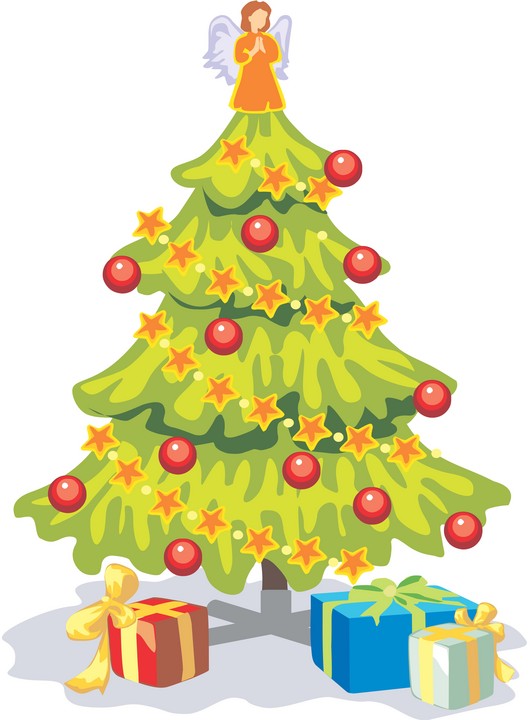
How and When Christmas Came Into the Church
Did you ever wonder how the non-biblical holiday called “Christmas” came into the mainstream Christians church? What follows is the backstory to Christmas—the rest of the story.
Christmas was not among the earliest festivals of the Church. Irenaeus and Tertullian omit it from their lists of feasts; Origen glancing perhaps at the discreditable imperial Natalitia, asserts (in Lev. Hom. viii in Migne, P.G., XII, 495) that in the Scriptures sinners alone, not saints, celebrate their birthday; Amodbius (VII, 32 in P.L., V, 1264) can still ridicule the “birthdays” of the gods. (The Catholic Encyclopedia, “Christmas”)
Saturnalia was an ancient Roman festival in honour of the god Saturn, held on 17 December of the Julian calendar and later expanded with festivities through to 23 December. The holiday was celebrated with a sacrifice at the Temple of Saturn, in the Roman Forum, and a public banquet, followed by private gift-giving, continual partying, and a carnival atmosphere that overturned Roman social norms: gambling was permitted, and masters provided table service for their slaves. (https://en.wikipedia.org/wiki/Saturnalia)
Saturnalia may have influenced some of the customs associated with later celebrations in western Europe occurring in midwinter, particularly traditions associated with Christmas, the Feast of the Holy Innocents, and Epiphany. (ibid.)
The popularity of Saturnalia continued into the 3rd and 4th centuries AD, and as the Roman Empire came under Christian rule, many of its customs were recast into or at least influenced the seasonal celebrations surrounding Christmas and the New Year. (ibid.)
According to The Catholic Encyclopedia, Christmas is not included in Irenaeus’s nor Tertullian’s list of Christian feasts, the earliest known lists of Christian feasts. The earliest evidence of celebration is from Alexandria, in about 200, when Clement of says that certain Egyptian theologians “over curiously” assign not just the year but also the actual day of Christ’s birth as 25 Pachon (May 20) in the twenty-eighth year of Augustus. By the time of the Council of Nicea in 325, the Alexandrian church had fixed a dies Nativitatis et Epiphaniae. The December feast reached Egypt in the fith century. In Jerusalem, the fourth century pilgrim Egeria from Bordeaux witnessed the Feast of the Presentation, forty days after January 6, which must have been the date of the Nativity there. At Antioch, probably in 386, St. John Chrysostom urged the community to unite in celebrating Christ’s birth on December 25, a part of the community having already kept it on that day for at least ten years.
Some scholars maintain that December 25 was only adopted in the fourth century as a Christian holiday after Roman Emperor Constantine converted to Christianity to encourage a common religious festival for both Christians and pagan. Perusal of historical records indicates that the first mention of such a feast in Constantinople was not until 379, under Gregory. In Rome, it can only be confirmed as being mentioned in a document from approximately 350 but without any mention of sanction by Emperor Constantine. (http://en.wikipedia.org/wiki/Christmas)
Evidently, Christmas was birthed out of the infant baptism heresy that was gripping the church theologically in the fourth century. The precursor to Christmas was a reaction or counter-revolt against Marcionite the heretic who denied the birth of Yeshua claiming that the Messiah was not a person, but rather a phantom. By emphasizing the nativity of the literal birth of Yeshua this heresy was countered, and by placing Yeshua’s birth on December 25, Saturnalia, it was a way to woo the sun worshipping heathens into Christianity. Here is what the historians have to say on this subject:
The grounds on which the Church introduced so late as [AD] 350-440 a Christmas feast till then unknown, or, if known, precariously linked with the baptism, seem in the main to have been the following. (I) The transition from adult to infant baptism was proceeding rapidly in the East, and in the West was well-nigh completed. Its natural complement was a festal recognition of the fact that the divine element was present in Christ from the first, and was no new stage of spiritual promotion coeval only with the descent of the Spirit upon him at baptism. The general adoption of child baptism helped to extinguish the old view that the divine life in Jesus dated from his baptism, a view which led the Epiphany feast to be regarded as that of Jesus spiritual rebirth. This aspect of the feast was therefore forgotten, and its importance in every way diminished by the new and rival feast of Christmas, (2) The 4th century witnessed a rapid diffusion of Marcionite, or, as it was now called, Manichaean propaganda, the chief tenet of which was that Jesus either was not born at all, was a mere phantasm, or anyhow did not take flesh of the Virgin Mary. Against this view the new Christmas was a protest, since it was peculiarly the feast of his birth in the flesh, or as a man, and is constantly spoken of as such by the fathers who witnessed its institution. (The Encyclopedia Britannica, eleventh edit., “Christmas”)
We find [Christmas] first in Rome, in the time of the bishop Liberius, who on the twenty-fifth of December, [AD] 360, consecrated Marcella, the sister of St. Ambrose, a nun or bride of Christ, and addressed her with the words: ‘Thou seest what multitudes are come to the birth-festival of they bridegroom.’ This passage implies that the festival was already existing and familiar. Christmas was introduced in Antioch a bout the year 380; in Alexandria, where the feast of Epiphany was celebrated as the nativity of Christ, not until about 430. Chrysostom, who delivered the Christmas homily in Antioch on the 25th of December, 386, already calls it, notwithstanding its recent introduction (some ten years before), the fundamental feast, or the root, from which all other Christian festivals grow forth. (Schaff, History of the Christian Church, vol. 3, p. 395)
The Christmas festival was probably the Christian transformation or regeneration of a series of kindred heathen festivals—the Saturnalia, Sigillaria, Juvenalia, and Brumalia—which were kept in Rome in the month of December, in commemorating of the golden age of universal freedom and equality, and in honor of the unconquered sun, and which were great holidays, especially for slaves and children. This custom accounts for many customs of the Christmas season, like the giving of presents to children and to the poor, the lighting of wax t appears, perhaps also the erection of Christmas trees, and gives them a Christian import… Had the Christmas festival arisen in the period of persecution, its derivation from these pagan festivals would be refuted by the then reigning abhorrence of everything heathen; but in the Nicene age this rigidness of opposition between the church and the world was in great measure softened by the general conversion of the heathen. Besides, there lurked in those pagan festivals themselves, in spite of all their sensual abuses, a deep meaning and an adaptation to a real want; they might be called unconscious prophecies of the Christmas feast. Finally, the church father themselves confirm the symbolical references of the feast of the birth of Christ, the Sun of righteousness, the Light of the world, to the birth-festival of the unconquered sun, which on the twenty-fifth of December, after the winter solstice, break the growing power of darkness, and begins anew his heroic career. (ibid., pp. 394–397)
Of the Christmas festival there is no clear trace before the fourth century; partly because the feast of Epiphany in a measure held he place of it; partly because the birth of Christ, the date of which, at any rate, was uncertain, was less prominent in the Christian mind than his death and resurrection. It was of Western (Roman) origin, and found its way to the East after the middle of the fourth century.” (ibid., vol. 2, p. 222)
The Pagan Origins of Christmas
The Catholic Encyclopedia has this say about the origins of Christmas:
The well-known solar feast, however, of Natalis Invicti, celebrated on 25 December, has a strong claim on the responsibility for our December date. For the history of the solar cult, its position in the Roman Empire, and syncretism with Mithraism, see Cumont’s epoch-making “Textes et Monuments” etc., I, ii, 4, 6, p. 355. Mommsen (Corpus Inscriptionum Latinarum, 12, p. 338) has collected the evidence for the feast, which reached its climax of popularity under Aurelian in 274. Filippo del Torre in 1700 first saw its importance; it is marked, as has been said, without addition in Philocalus’ Calendar. It would be impossible here even to outline the history of solar symbolism and language as applied to God, the Messiah, and Christ in Jewish or Christian canonical, patristic, or devotional works. Hymns and Christmas offices abound in instances; the texts are well arranged by Cumont (op. cit., addit. Note C, p. 355). The present writer is inclined to think that, be the origin of the feast in East or West, and though the abundance of analogous midwinter festivals may indefinitely have helped the choice of the December date, the same instinct which set Natalis Invicti at the winter solstice will have sufficed, apart from deliberate adaptation or curious calculation, to set the Christian feast there too. (Catholic Encyclopedia, “Christmas”)
The same article in The Catholic Encyclopedia then goes on to say:
The origin of Christmas should not be sought in the Saturnalia (1-23 December) nor even in the midnight holy birth at Eleusis (see J.E. Harrison, Prolegom., p. 549) with its probable connection through Phrygia with the Naasene heretics, or even with the Alexandrian ceremony quoted above; nor yet in rites analogous to the midwinter cult at Delphi of the cradled Dionysus, with his revocation from the sea to a new birth (Harrison, op. cit., 402 sqq.). (Catholic Encyclopedia, “Christmas”)
On what basis are we to accept the above statement? Just because the author says so, when the circumstantial evidence to the origins of Christmas disagree with this author? Hopefully not.
A Christmas-Type Celebration Predated Christianity
Continue reading






